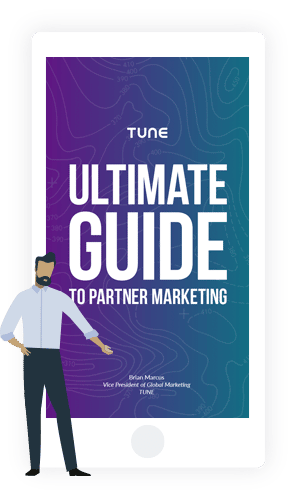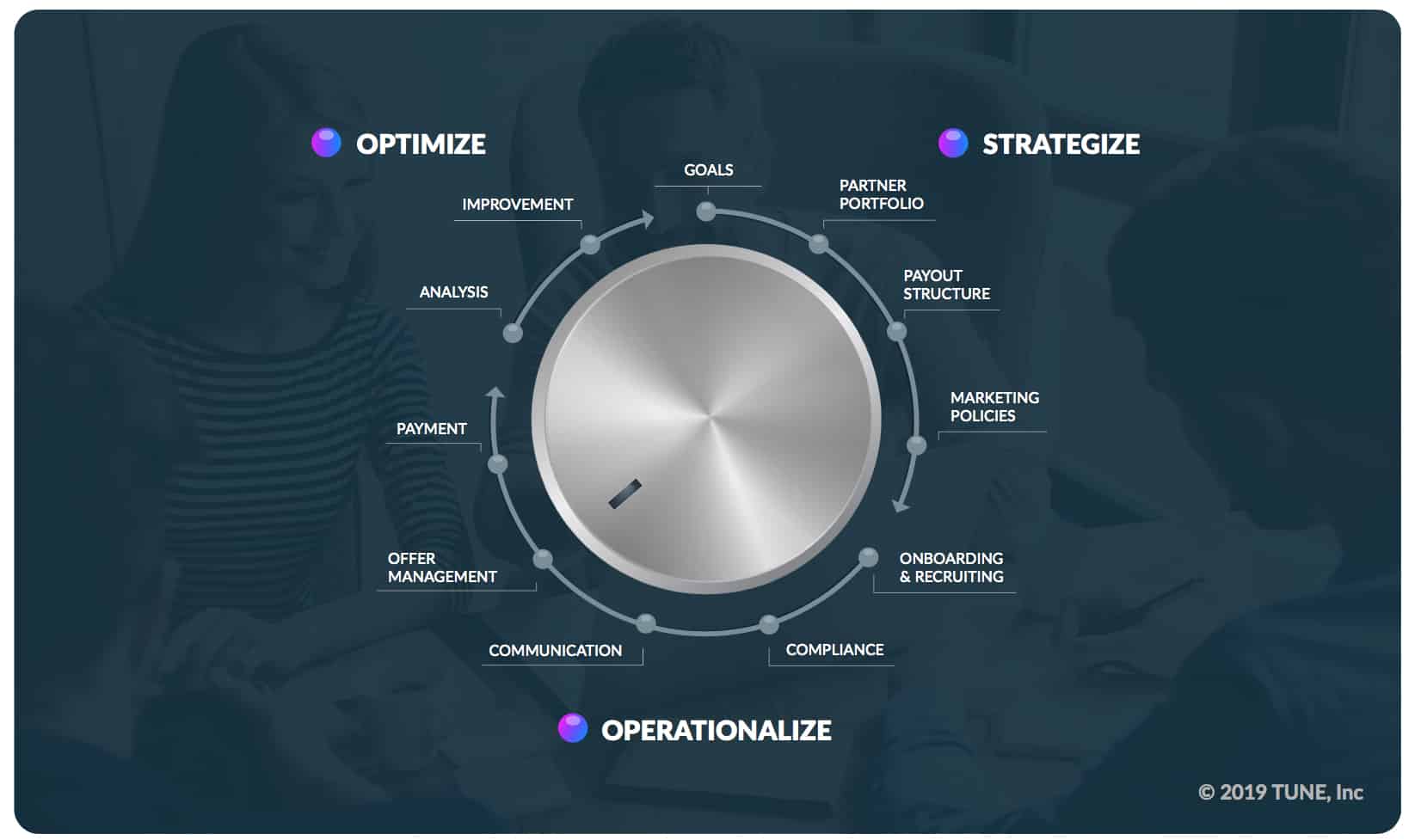Drumroll, please … it’s time for Part 5 of The Ultimate Guide to Partner Marketing series! Here’s what we have discussed up to this point in our previous posts:
- Part 1, developing a strategy for building a successful partner marketing program by setting goals, choosing KPIs, and planning out a partner portfolio;
- Part 2, determining the program’s payout structures and the marketing policies that affiliates and partners will follow;
- Part 3, putting these strategies to work in the partner recruitment and onboarding process; and
- Part 4, best practices for using communication and policies to protect the business and enforce partner compliance.
In Part 5, we’ll get into the nitty gritty of the common denominator of partner marketing: promotional offers. This post will explain what partner offers are and how they work, share best practices for managing offers in a partner program, and review the software and tools needed to track and manage offers across digital channels.
The Partner Marketing Journey Continues
Today’s post on offer management brings us closer to the end of the Operationalize section of the TUNE In Framework — and near the end of full cycle itself.
The Basics of Partner Offer Management
In partner marketing, an offer is the thing that is being promoted (i.e., marketed) by your partners. (Makes sense, right?) Partner offers are almost always promoted through a URL, which sends an interested consumer to a landing page or in-app location. Typically, the consumer clicks on this URL while on a web page or in an app, but they may also enter the offer URL directly into the search field. This can happen, for example, when a podcast airs a partner promotion and asks the listener to visit a partner-specific URL to learn more.
There are two main types of offers:
- Product/service offers, which drive consumers to a purchase experience.
- Lead generation offers, which drive consumers to enter their personal information as a means to receive information about a service.
On a technical level, the data that is contained within the offer includes all of the basic details necessary for partners to find, promote, track, and earn commission on that offer.
As the driving force behind your business’s promotions, your offers should be three things: interesting, to attract partners; informative, to answer their main questions upfront; and technical, to provide reliably accurate tracking across mobile and web.
The Tools of the Partner Offer Trade
To successfully manage partner offers, and to run a partner program in general, you need performance marketing technology (which is also known as affiliate marketing software or a partner marketing platform). This is because offers require complex tracking and attribution functionality to work where your customers are — on mobile web pages, in iOS and Android apps, and on desktop browsers. You can read more about the basics of offer tracking here.
Tracking platforms handle the behind-the-scenes processes that allow advertisers to create, manage, and attribute offers across mobile apps and online browsers.
In addition to tracking and attributing offers, this software should also provide features and tools for offer management, program application and approval, partner onboarding, payment processing, fraud prevention, performance optimization, and automation. Typically, you have two choices: a customizable SaaS platform (such as TUNE) or an affiliate network (such as AWIN or Button).
Either way, before a single partner joins your program, you should set up several offers, organize them so that they are descriptive and easy to browse, and test that the tracking links work.
Once your offers are live and your program is active, affiliates will then be able to instantly log in to search for interesting offers, select the offers they plan to promote, and then copy the link or creative code for each of those offers. The partner then pastes that link or code on their website, in an ad, or as part of some other digital real estate, and the tracking platform does the rest.
The savvier your partners are, the more tracking options you need to provide. For example, most partners need to pass in their own third-party tracking pixel or postback parameters so they can track conversions in their own analytics systems or through an SDK for mobile apps. Many partners add customizable parameters in their unique tracking URLs, which makes it easier to manage their reporting. They may also want to generate tracking URLs using shortened URL formats, create SEO-friendly links, and add alphanumeric IDs for internal tracking purposes. Most partners also place an impression pixel for their offers to gain additional insight into their reporting.
Be sure that you are using a platform that allows you to provide multiple tracking methods — ones that work for apps and mobile web in addition to desktop browsers — and customization options for your partners. Not being able to handle postback tracking or too few customizable settings can be a deal breaker for many partners. Don’t lose them before they even sign up; have the right technology and tracking ready from the get-go.
You can find more details about how offers work and the mechanics behind tracking in The Ultimate Guide to Partner Marketing.
Coming Up
We’re almost to the end of our series — only two posts left to go! Up next is Part 6, where we will discuss partner payments, the lifeblood of successful partner programs, and best practices for verifying results and rewarding partner performance.

Learn how to plan, build, and grow cross-channel partner programs with our Ultimate Guide to Partner Marketing series. Follow along as we introduce strategies from the Ultimate Guide and bring them to life with real use cases from leading brands and advertisers.
Author
Becky is the Senior Content Marketing Manager at TUNE. Before TUNE, she handled content strategy and marketing communications at several tech startups in the Bay Area. Becky received her bachelor's degree in English from Wake Forest University. After a decade in San Francisco and Seattle, she has returned home to Charleston, SC, where you can find her strolling through Hampton Park with her pup and enjoying the simple things between adventures with friends and family.





Leave a Reply
You must be logged in to post a comment.